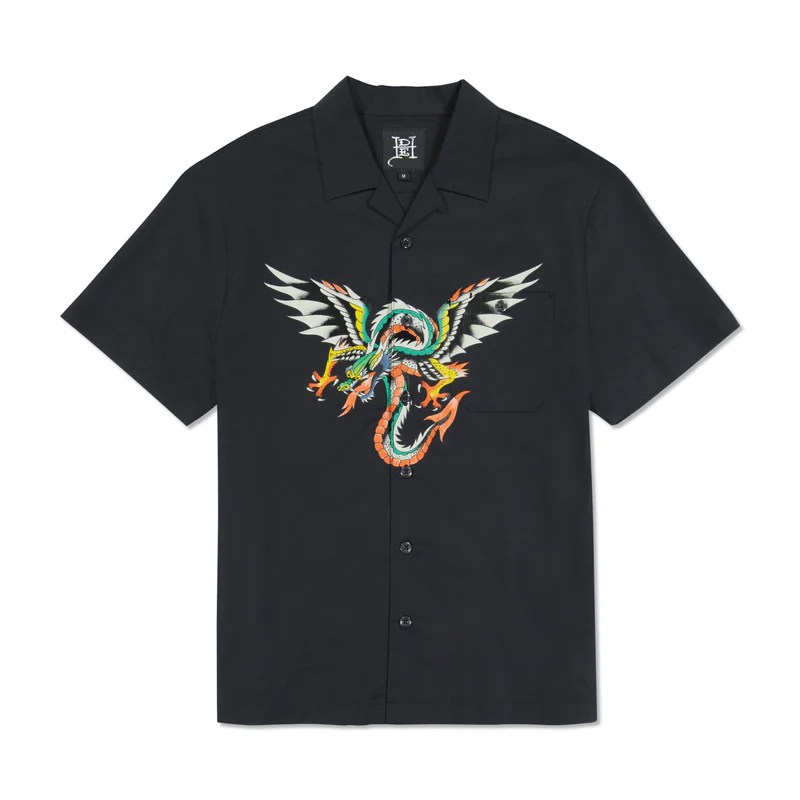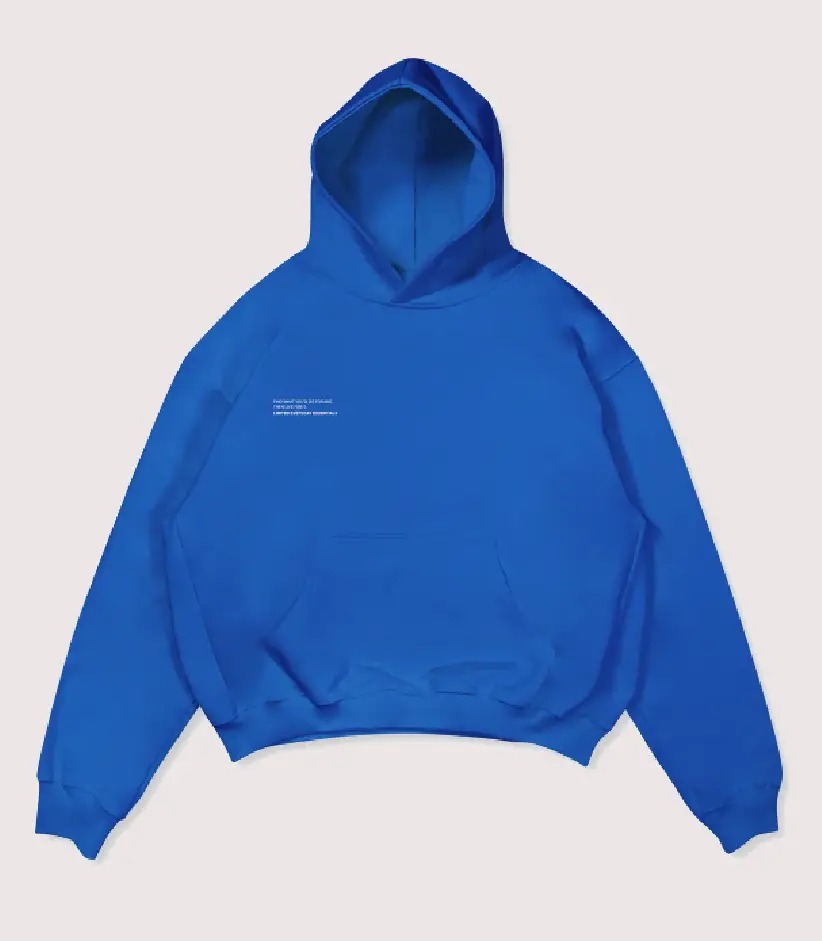Ed Hardy, a name synonymous with vibrant tattoo art and bold fashion statements, is much more than just a brand. It’s the story of one man’s passion for tattoo artistry and how that evolved into a fashion empire that revolutionized the industry. From his beginnings as a tattoo artist to becoming a global fashion icon, Ed Hardy’s journey is a fascinating tale of creativity, resilience, and the merging of two distinct cultures—tattoo and fashion. This article delves into the incredible journey of Ed Hardy and how his unique vision left a lasting impact on both the tattoo and fashion worlds.
The Early Days: A Passion for Tattoo Art
Don Ed Hardy’s journey began in California, where his passion for art was ignited at a young age. Born in 1945, ed hardy tracksuit fascination with tattoos started during his teenage years. He studied fine arts at the San Francisco Art Institute but remained drawn to the world of tattooing. In the 1960s, tattoos were still seen as subversive and often associated with rebellion, but Hardy saw them as a legitimate form of self-expression and artistic creativity. His early works were heavily influenced by traditional American tattoo styles, but Hardy’s thirst for knowledge led him to explore Japanese tattoo art. In 1973, he traveled to Japan to study under the renowned tattoo master Horihide. This experience had a profound effect on Hardy, merging his knowledge of Western tattoo techniques with the precision and symbolism of Japanese tattoo artistry. His distinctive style was born from this cultural fusion, setting him apart as a visionary in the tattoo world.
Merging Tattoos with Fashion
Although Don Ed Hardy gained respect and recognition as a tattoo artist, his influence would extend far beyond the world of inked skin. In the early 2000s, Christian Audigier, a French fashion designer known for his work with brands like Von Dutch, approached Hardy with a unique proposition. Audigier saw the potential of Hardy’s tattoo art as a fashion statement and wanted to bring his designs to a global audience. The result was the launch of the Ed Hardy clothing line, which took the tattoo art aesthetic and transformed it into wearable fashion. The bold, colorful designs that adorned Hardy’s tattoos became the signature look of the brand, featuring iconic imagery such as tigers, eagles, koi fish, skulls, and roses. Each design carried deep symbolism, drawing from both Western and Eastern tattoo traditions, making the clothing line much more than just a fashion trend—it was a form of self-expression.
Ed Hardy’s Breakthrough in Pop Culture
The Ed Hardy brand exploded onto the fashion scene in the mid-2000s, thanks to its unique approach to merging tattoo art with clothing. Celebrities and pop culture figures embraced the brand, with stars like Madonna, Britney Spears, David Beckham, and Paris Hilton frequently spotted wearing ed hardy jeans apparel. This celebrity endorsement catapulted the brand to global fame, making it a household name. Ed Hardy’s clothing became synonymous with the bold, edgy, and rebellious spirit of the era. The brand’s popularity was particularly strong in streetwear and youth culture, where individuals used fashion to express their individuality and defy conventional trends. The designs were loud, unapologetic, and visually striking, reflecting Hardy’s tattoo artistry in every thread.
Tattoos as a Form of Self-Expression
One of the key reasons behind Ed Hardy’s success is the deeper meaning behind the designs. Tattoos have long been a form of personal storytelling, allowing individuals to wear their experiences, values, and beliefs on their skin. By bringing these tattoo designs into fashion, Ed Hardy allowed people to express their identities without getting permanently inked. The brand tapped into the growing cultural acceptance of tattoos as symbols of individuality and self-expression. Each piece of Ed Hardy clothing told a story, much like the tattoos themselves. From dragons symbolizing power and strength to skulls representing mortality, the designs resonated with people on a personal level. Wearing Ed Hardy became a way to align oneself with the brand’s rebellious and creative ethos.
The Rise and Fall of Ed Hardy’s Fashion Empire
The Ed Hardy brand saw massive success in the mid-2000s, becoming a fashion staple for many. However, like many trends, its popularity eventually waned. Over-commercialization and oversaturation in the market led to the brand being viewed as mainstream rather than edgy, which caused some of its original allure to fade. As more knock-offs and replicas flooded the market, the exclusivity and authenticity of the brand were compromised. Despite this, Ed Hardy’s impact on fashion remained undeniable. The brand had successfully introduced tattoo art to the world of fashion, influencing countless designers and leaving an indelible mark on streetwear and pop culture. Even as its trendiness faded, Ed Hardy’s legacy continued to inspire those who embraced bold self-expression through their clothing choices.
Ed Hardy’s Legacy in Fashion and Art
While the Ed Hardy brand may have experienced a decline in popularity, its influence can still be felt today. The fusion of tattoo art and fashion pioneered by Hardy opened the door for other designers to experiment with incorporating body art into their collections. The acceptance of tattoos as an integral part of fashion also shifted societal perceptions, making tattoos a more accepted and celebrated form of personal expression. In recent years, Ed Hardy’s iconic designs have experienced a resurgence, as fashion cycles often bring back trends from the past. Vintage Ed Hardy pieces are now sought-after collectibles, and new generations are rediscovering the artistic value of Hardy’s work. Additionally, Hardy himself remains a respected figure in both the tattoo and art communities, continuing to create art and inspire others with his unique vision.
The Art Behind the Fashion
What makes Ed Hardy’s designs stand out is the art behind the fashion. Hardy’s tattoos were never just about decoration—they were meaningful works of art that told stories. His ability to translate this art form into clothing gave the brand a level of depth that went beyond typical fashion trends. Whether it was a dragon representing wisdom and strength or a koi fish symbolizing perseverance, each design had a story to tell. This artistic approach resonated with people who wanted more than just a fashion statement. They wanted to wear something that reflected their personal journey and values, making Ed Hardy’s clothing much more than just a piece of fabric.
Conclusion
The journey of Ed Hardy from a tattoo artist to a global fashion icon is a testament to the power of creativity and self-expression. By merging the worlds of tattoo art and fashion, Hardy created a brand that resonated with millions, allowing them to express their individuality through bold, meaningful designs. While the brand’s popularity may have fluctuated over the years, its legacy as a pioneer of wearable art remains strong. Ed Hardy’s story is not just about fashion—it’s about art, rebellion, and the power of personal narratives. The brand’s influence continues to inspire new generations to embrace their creativity and wear their stories proudly.



